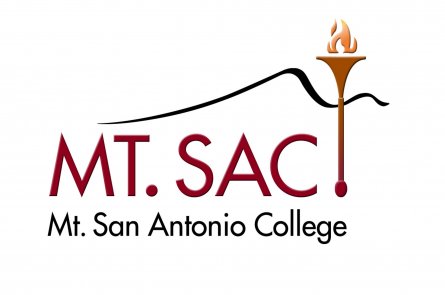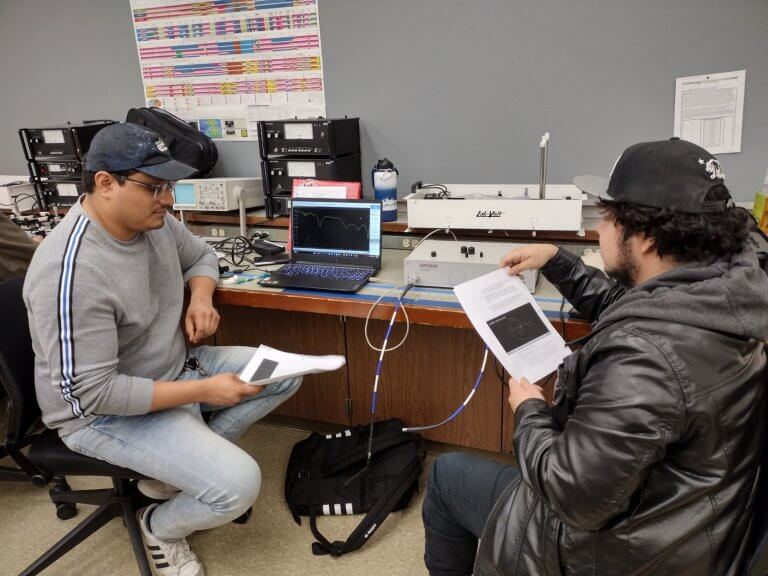
Mt. SAC Uses CMT VNAs to Give Students Valuable Technical Experience
With a limited budget, Jonathan Hymer—a professor at Mt. San Antonio College—sought a VNA solution to deliver a hands-on experience with RF equipment to students in the school’s Electronics Technology program. Professor Hymer was skeptical that he could find a high-performance solution to outfit their lab until he discovered Copper Mountain Technologies. Through CMT, he purchased enough 2-Port 8 GHz VNAs for his entire department without sacrificing functionality or performance. Acquiring CMT VNAs alongside the RF Teaching Kit which includes a calibration module, a few devices under test (DUTs), and accessories necessary for an array of common VNA measurements, has helped Mt. San Antonio College’s Electronics Technology department produce talented graduates that companies are eager to hire.

Mt. San Antonio College (Mt. SAC) is a public community college in Walnut, California, which offers more than 260 degree and career certificate programs, including a 2-year program in Electronics Technology. Students in the Electronics program have two academic pathways—a traditional associate degree program, or a career certificate which enables students to immediately join the workforce. Jonathan Hymer teaches Microwave Communications, among other courses, in the fast-growing electronics department. Professor Hymer believes the key to the recent growth of the electronics department at Mt. SAC stems from their career and technology approach to education. “We try to keep it relevant, fresh, and employer-focused,” Hymer explained. “Our task, as much as anything, is to prepare students for the workforce.”

Because courses in the Electronics program do not have the prerequisite requirements of courses in a typical electrical engineering program, many students enter with minimal technical and mathematical experience and little understanding of electronics fundamentals. Professor Hymer feared some students would leave his courses without a sense of how the knowledge is applied beyond the classroom. Once the budget became available, he began searching for affordable test equipment to bridge the gap between theory and a practical understanding of RF tests and measurement.
Professor Hymer had modest expectations about finding a vector network analyzer solution to incorporate into his curriculum. “I figured I’d only be able to afford a single, low-end VNA for my students,” recalled Hymer. His expectations quickly evolved when he discovered Copper Mountain Technologies. “CMT’s VNAs do everything that a competitor instrument does, at a price point that was too good to pass up. I leapt at the chance to keep our program up to date with an outfit of lab-grade equipment.” Mt. SAC ultimately purchased a dozen of CMT’s VNAs, now used in the program’s Microwave Communications courses.
Beyond the performance and price point of the VNAs, the accessibility of CMT’s software was appealing to Hymer. “A big part of my decision-making was the free availability of the software on CMT’s website. Others make it difficult or impossible to use the software without the instrument,” explained Hymer. “When I saw that CMT had a ‘demo the software’ feature that allowed students to learn on their own, I was highly impressed.” With unlimited access to the VNA software in demo mode, students now have the freedom to hone their skills at their own pace, no longer confined to learning during scheduled class time. In addition to unlimited access to the VNA software, Mt. SAC students can work with the school’s full-time equipment tech to check out a VNA —and other lab equipment—for use during extended lab hours.

Professor Hymer has developed a lab curriculum to help teach VNA use to his students (examples of the curriculum can be found here). His labs provide context on the measurements involved, an overview of the DUTs, and details on calibration before a guided walkthrough of the measurement process. Once the students complete the lab, they answer questions about the measurements, DUTs, etc., and convey what they have learned.
Many students enrolled in the Microwave Communications course at Mt. SAC arrive without hands-on VNA measurement experience. The lab curriculum helps provide a structured learning experience, simplifying the use of equipment that can be overwhelming to beginners. Professor Hymer believes that the intuitive user interface of the VNA software has also helped mitigate the learning curve for students. “One huge payoff from the CMT VNAs is that after my students are first acquainted, they become comfortable with the software within a half hour. They know what they are looking at, how to use it, and what to extract from the measurement results.”
Access to metrology-grade lab equipment has given Mt. SAC students the training many career and technology programs are trying to implement. The hands-on experience from Professor Hymer’s courses has made his graduates attractive targets for prospective employers. “There are a lot of aerospace and defense companies in [LA County], and several of them have snatched my students up the moment they graduated because of their competence and measurement experience.”

RF Teaching Kit
Bring Hands-On Experience to RF Students
Copper Mountain Technologies’ RF Teaching Kit is a complete solution designed to assist educational institutions as they teach RF skills to engineering students. The kit is compatible with various CMT VNA models and includes the calibration module, a few devices under test (DUTs), and accessories necessary for an array of common VNA measurements. The kit also includes sample laboratory curriculum for teaching using the tools in the kit.


